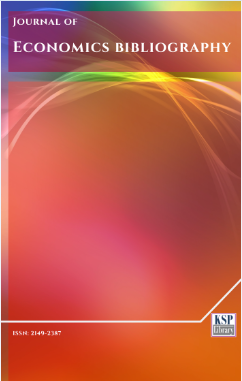How Borda voting rule can respect Arrow IIA and avoid cloning manipulation
Abstract
Abstract. This paper proposes a new formulation of the Borda rule in order to deal with the problem of cloning manipulation. This new Borda voting specification will be named: Dynamic Borda Voting (DBV) and it satisfies Arrow's IIA condition. The calculations, propositions with proof and explanations are made to show the effectiveness of this method. From DBV, the paper presents a method to measure and quantify the magnitude of the shock due to change in irrelevant alternatives over a scale moving from 0 to 100.
Keywords. Voting rules, Arrow IIA, Cloning manipulation.
JEL. C60, D70, D80.
Keywords
References
Arrow, K.J. (1963). Social Choice and Individual Values. 2nd ed. Wiley.
Barbie, M., Puppe, C., & Tasnádi, A. (2006). Non-manipulable domains for the Borda count. Economic Theory, 27(2), 411–430. doi. 10.1007/s00199-004-0603-4
Béhue, V., Favardin, P., & Lepelley, D. (2009). La manipulation stratégique des règles de vote: Une étude expérimentale. Recherches économiques de Louvain, 75(4), 503-516. doi. 10.3917/rel.754.0503
Borda, J.C. (1781). Histoire de l'Académie Royale des Sciences. Mémoire sur les élections au scrutin.
Condorcet, M.D. (1785). Éssai sur l’application de l’analyse à la probabilité des décisions rendues à la pluralité des voix. Imprimerie Royale.
Dasgupta, P., & Maskin, E. (2003). On the Robustness of Majority Rule. Mimeo.
Diss, M., & Tlidi, A. (2016). Another Perspective on Borda's Paradox. GATE - Lyon Saint-Etienne WP No.1632. [Retrieved from].
Gibbard, A. (1973). Manipulation of votings schemes: A general result. Econometrica, 41(4), 587-601. doi. 10.2307/1914083
Islam, J., Mohajan, H., & Moolio, P. (2012). Borda voting is non-manipulable but cloning manipulation is possible. International Journal of Development Research and Quantitative Techniques, 2(1), 28–37.
Lehtinen, A. (2007). The Borda rule is also intended for dishonest men. Public Choice, 133(1-2), 73-90. doi. 10.1007/s11127-007-9178-5
Lepelley, D., Moyouwou, I., & Smaoui, H. (2017). Monotonicity paradoxes in three-candidate elections using scoring elimination rules. Social Choice Welfare. doi. 10.1007/s00355-017-1069-1
Maskin, E. (1995). Majority rule, social welfare functions, and game forms. in, K. Basu, P.K. Pattanik & K. Suzumura (Eds.), Choice, Welfare and Development. (pp.100-109), Oxford: Clarendon Press.
Saari, D., & McIntee, T. (2013). Connecting pairwise and positional election outcomes. Mathematical Social Sciences, 66(2), 140–151. doi. 10.1016/j.mathsocsci.2013.02.002
Satterthwaite, M.A. (1975). Strategy-proofness and Arrow’s conditions. Journal of Economic Theory, 10(2), 198-217. doi. 10.1016/0022-0531(75)90050-2DOI: http://dx.doi.org/10.1453/jeb.v4i3.1383
Refbacks
.......................................................................................................................................................................................................................................................................................................................................
Journal of Economics Bibliography - J. Econ. Bib. - JEB - www.kspjournals.org
ISSN: 2149-2387.
Editor: [email protected] Secretarial: [email protected] Istanbul - Turkey.
Copyright © KSP Library

